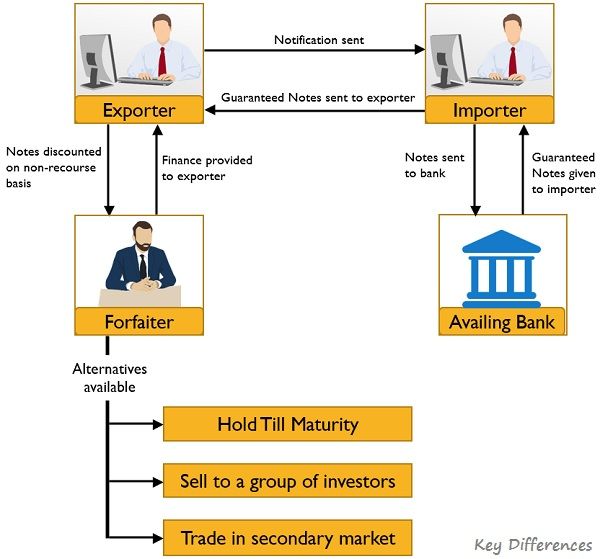Forfaiting is a financial instrument that is used to facilitate international trade by providing a means for exporters to receive payment for their goods or services before the agreed upon payment due date. This is accomplished through the use of a forfaiter, a financial institution or company that purchases the exporter's trade receivables at a discount, in exchange for immediate payment.
The mechanism of forfaiting involves several key steps. First, the exporter and the importer enter into a contract for the sale of goods or services. This contract typically includes a provision for payment, which may involve a deferred payment period or a series of installments.
Next, the exporter approaches a forfaiter and presents their trade receivables, which are the rights to receive payment under the contract with the importer. The forfaiter will review the contract and assess the creditworthiness of the importer, as well as the risk involved in purchasing the trade receivables. If the forfaiter decides to proceed, they will offer to purchase the trade receivables at a discount, taking into account the risk and the time value of money.
Once the forfaiter and the exporter reach an agreement on the terms of the forfaiting transaction, the forfaiter will provide the exporter with immediate payment for the trade receivables. The forfaiter will then assume the role of the creditor and will be responsible for collecting the full amount of the trade receivables from the importer on the agreed upon payment due date.
The mechanism of forfaiting provides several benefits for both exporters and importers. For exporters, forfaiting allows them to receive payment for their goods or services upfront, which can help them to manage their cash flow and fund their operations. For importers, forfaiting provides a means to obtain goods or services from foreign suppliers without having to come up with the full amount of payment upfront. This can be especially useful for importers who may have limited access to credit or who may not want to tie up their own capital in a long-term payment plan.
Overall, the mechanism of forfaiting is a useful tool for facilitating international trade by providing a way for exporters to receive payment upfront and for importers to obtain goods or services from foreign suppliers on a deferred payment basis.





